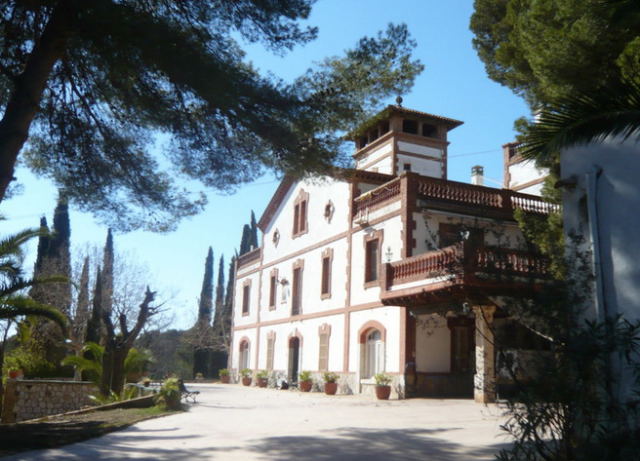Masia de San Antonio – the Bulto home
Thanks to Retrotrials.com, see the full article here .

Masia de San Antonio was originally owned in 1830 by Isidro Marques Riba who made his fortune in Cuba. Having returned from Cuba, Isidro founded a fabric factory and purchased the land. Although beautiful, San Anonio’s ground is harsh and lacking in water, making it unsuitable for growing vines as they had planned.
When Isidro died, San Antonio is a small part of the legacy left to his son Manuel Marques. Manuel continues with the textile industry and agriculture. He also introduced social benefits to his workers not known anywhere else. Vines are grown at San Antonio and the infrastructure at the farm to support it, including cellars.
The farm was occupied by the workers and Manuel and his family rarely visited, until appointed president of the railway company stretching from Madrid to Zaragoza and Alicante. The company immediately began to build more railway lines that run along the coast towards Barcelona passing nearby the farm. Manuel was not happy as he was not able to watch the train pass and time its arrival. So in order to rectify this problem he decided to build a high tower, which kept increasing in height, stopping when the railway could be seen. He also decided to install electricity and telephone to San Antonio, a rare treat at this time indeed. Railway workers would signal from the train to the tower at San Antonio.
The daughter of Manuel Marques, Marques Pilar Soler, inherited the factories, farms and, of course, San Antonio. In 1901, the house was completely renovated and heating was installed. To celebrate the facade is crowned with a granite sundial that is still there today.
In 1936, came the start of the Spanish Civil War. The Republican army commandeered the property.
During the years of war, the Bultó-Marquis family left the house and it became a hospital which meant that, after the war, the damage to the house focused primarily on the chapel which was destroyed and had to be rebuilt. The furniture was all gone as well. There are a number of bullet holes in the walls, a sad reminder of what was.
As a celebration at coming back to the land, Pilar Marqués who was still running the businesses organized the first pilgrimage of Spain, in which the whole family Bultó-Marques and 400 employees gathered in a procession to visit the statue, the Virgin of Montserrat. To remember the date a small square in front of the Virgin can still be seen in Montserrat. Also a memorial “Black Madonna” was placed in the front garden of the farmhouse of San Antonio.
In the 50s, Paco Bultó Marquis inherited the estate from his mother. As a younger son he has inherited the least productive farm. However, Paco has a huge affection for the place. He starts making the vinery estate perform and produce quantity. His wife, Ines Sagnier at this time decorates and makes the house more comfortable.
Paco is not inclined to follow in his father footsteps in the textile sector which was the main activity of the family.
Paco founded a piston ring company, then later jointly founded Montesa Motorcycles with Permanyer. He went on to leave Montesa taking many of the top workers and engineers with him to start Bultaco motorcycles.
Today, nearly 200 years after Marquis Isidro bought the farm, San Antonio remains with Bultó-Marquis family as always. The plan is to enjoy it and preserve it for future generations.
Interesting facts
- Francisco Xavier Bultó Marqués, fondly named Paco Bulto lived here along with his home in Barcelona.
- The farm is the place where Snr Bulto is laid to rest.
- In 1964 Ariel rider and legend Sammy Miller was secretly invited here for a meeting to discuss designing and producing a new trials machine. The meeting went well.
- Later, Sammy returned and developed the Bultaco Sherpa here in 10 days of testing.
- Such were the significant advances on this machine that it changed motorcycle trials forever. Ever after trials competitions would be classified as being pre 65 or otherwise.
